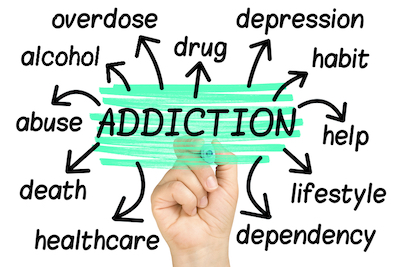Addiction, a complex and multifaceted phenomenon, transcends mere habit or impulse, delving into the intricacies of neuroscience and psychology. The science of craving, rooted in the brain’s reward system, provides insights into the mechanisms that drive addictive behaviors. Understanding addiction involves unraveling the neural pathways, neurotransmitters, and psychological factors that contribute to the compelling desire for substances or activities. This exploration aims to shed light on the scientific aspects of craving, offering a foundation for comprehending addiction and unveiling strategies to overcome its grip on individuals.

1. Neurobiology of Craving:
Craving, at its core, is a neurobiological phenomenon influenced by the brain’s intricate reward circuitry. The release of neurotransmitters such as dopamine, serotonin, and endorphins plays a pivotal role in shaping the experience of pleasure and reinforcing behaviors. Addictive substances or activities stimulate this reward system, creating a euphoric sensation that the brain seeks to replicate. Over time, repeated exposure can lead to neuroadaptation, altering the brain’s structure and function. This neural rewiring contributes to heightened tolerance, increased cravings, and a diminished ability to experience pleasure through non-addictive stimuli.
2. Psychological Factors in Addiction:

Beyond the neurobiological underpinnings, addiction is intertwined with various psychological factors. Trauma, stress, and underlying mental health conditions can serve as catalysts for addictive behaviors, offering an escape or coping mechanism for individuals facing emotional challenges. The concept of craving extends beyond the physical need for a substance; it encompasses the psychological yearning for relief or fulfillment. Understanding these psychological triggers is crucial for developing comprehensive approaches to addiction treatment and addressing not only the symptoms but also the root causes that fuel the cycle of craving and dependence.
3. The Role of Habit Formation:
Habitual behavior is a significant component of addiction, as repeated engagement with a substance or activity solidifies the neural pathways associated with craving. The basal ganglia, a brain region involved in habit formation, becomes intricately linked to the reward system. Breaking the cycle of addiction requires disrupting these established habits and replacing them with healthier alternatives. Behavioral therapies, counseling, and cognitive interventions aim to reshape thought patterns and responses. Offering individuals the tools to navigate triggers, manage cravings, and build resilience against the pull of addiction.

4. Overcoming Addiction: The Rehab:
When confronting the complex challenge of addiction, seeking professional help is a crucial step toward recovery. Consider exploring reputable facilities tailored to address your specific substance addiction, whether it be opioids, cocaine, methamphetamine, or alcohol. In these facilities, experienced professionals provide comprehensive support, addressing not only the physical aspects of addiction but also the underlying psychological factors contributing to substance abuse. In an alcohol rehab in Austin, individuals receive personalized treatment plans, counseling, and access to a supportive community that understands the journey to recovery. By embracing evidence-based practices in facilities like an alcohol rehab in Austin, or your local area, individuals can find the necessary tools to overcome addiction and embark on a path to lasting recovery.
5. Building Resilience and Preventing Relapse:
Recovery from addiction is an ongoing process that requires the cultivation of resilience and the implementation of relapse-prevention strategies. Developing coping mechanisms for stress, establishing a support network, and adopting a healthy lifestyle contribute to building resilience against the allure of addictive behaviors. Mindfulness practices, such as meditation and yoga, can enhance self-awareness and emotional regulation. Education about the nature of addiction and its impact on the brain fosters a proactive mindset. It empowers individuals to make informed choices. Recognizing the signs of Relapse and having a personalized relapse prevention plan in place are crucial elements in maintaining long-term recovery and preventing the resurgence of cravings.

Conclusion:
The science of craving unravels the intricate web of neurobiology and psychology that underlies addiction. From the release of neurotransmitters in the brain’s reward system to the psychological factors contributing to craving, understanding addiction is a nuanced endeavor. Treatment approaches that integrate behavioral therapies at rehab, medications, and support networks provide a comprehensive framework for overcoming addiction. Building resilience, adopting healthy habits, and implementing relapse prevention strategies are integral to sustaining recovery. By delving into the complexities of craving, individuals and healthcare professionals alike can work collaboratively to address the root causes of addiction and pave the way for a fulfilling and addiction-free life.

